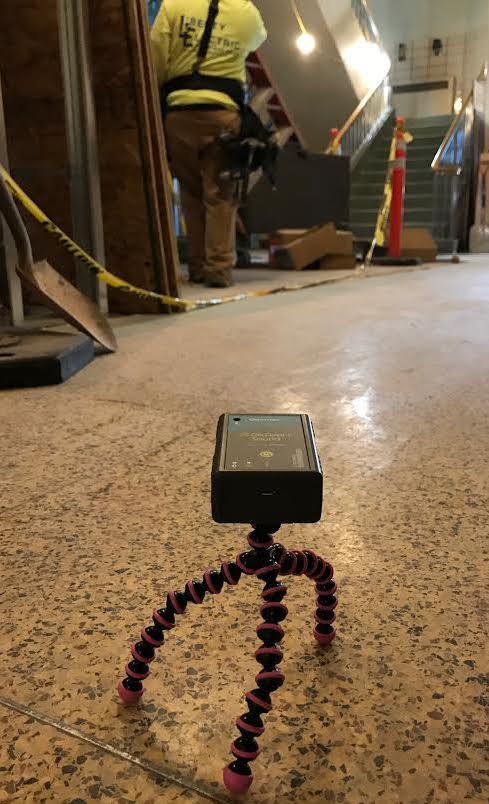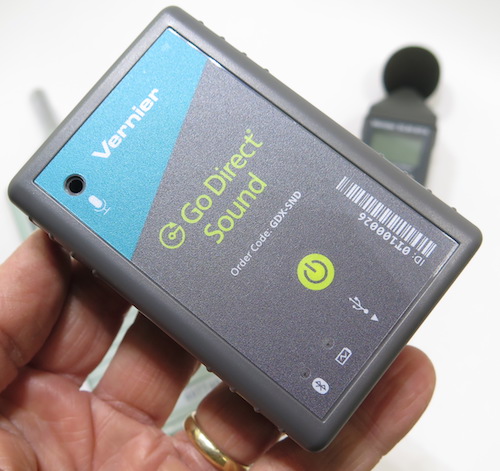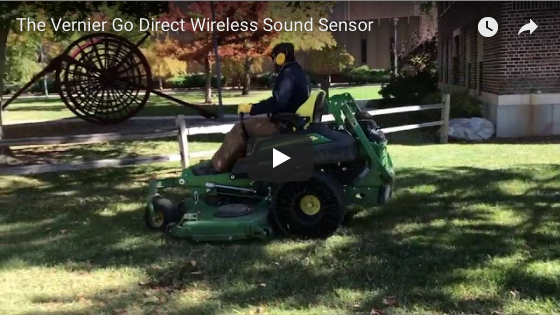As much as I loved field trips with my students, I found the bus rides to be excessively stressful. It wasn’t because of the teacher responsibilities or the student behavior, but because of the noise. The volume and diversity of machine noises and the voices and laughter bouncing around the inside of the school bus echo chamber made me tense and over stimulated. Then on one trip, I wore earplugs and it was if a calm settled over me. My movements were slower and measured, my patience with students was infinite, and I could finally relax and enjoy watching the students’ social behaviors outside the classroom through the lens of evolutionary biology and anthropology.
The academic study of sound is common across the grades in science class. And today with the ever-present earbuds, sound safety has taken on an importance shared by those who teach about life choices, nutrition, and physical activity. Unfortunately, even with attempts to educate the young mind to the dangers of loud music, and the need to practice safe hearing,
the numbers used to define a hearing-safe environment may be wildly outdated.
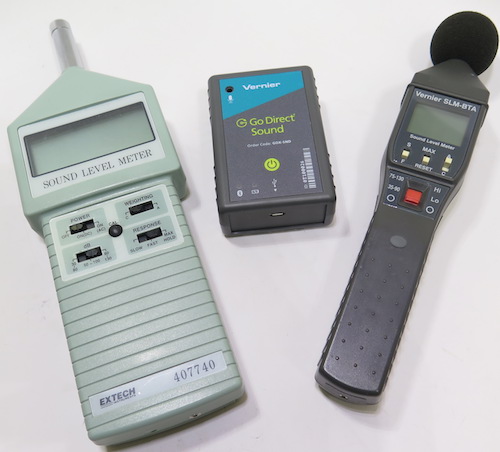
Three generations of Vernier sound sensors.
So unless kids today are born with different auditory hardware, you might be wondering what could make a physical number outdated. After all, heavy metal music is not like a heavy metal concentration in blood, and a rock star is not an impending impact from a rogue asteroid. (I like stretching comparisons. In fact, I’ve got a publication on a
NASA/JPL website comparing Comets to Cows. They are surprisingly similar in my opinion.) So let’s start at the beginning.
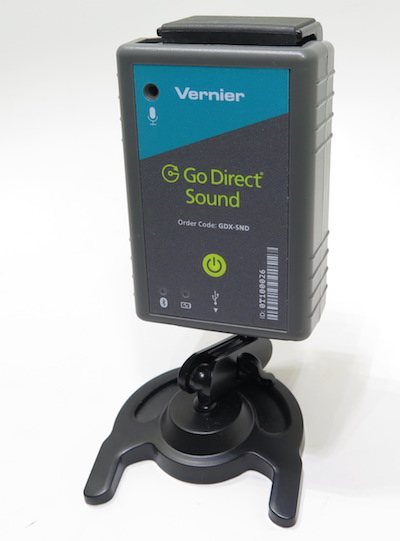
The boxy shape of the Go Direct Sound sensor easily allows it to fit into various cell phone tripod adapters.
The set of numbers we use to define a hearing-safe environment involves the sound intensity (usually measured in decibels or dB), as well as the duration of the sound, the impulses of the sound, and the perhaps most importantly, the assumption that once leaving the loud sound environment of concern (usually the worksite), a person would enter a quiet setting for the remainder of the day. As you can imagine, we very rarely move from a loud environment to a quieter one. For instance, a student my begin their day with a ear-shattering alarm from their cell phone that they shared a pillow with, to a quick shower while being blasted by their latest music playlist, to a breakfast filled with TV and chatter and humming and dinging appliances. Then out into the real world filled with noisy transportation choices competing with earbuds, headphones, and thumping base woofers rattling license plates of nearby cars. Public transportation whether bus or subway piles on the decibels to the point that anyone actually hearing the music pumped directly into the student’s ear canals from their earbuds requires the little bead on the volume control string to be slid to the far right and into the wall.
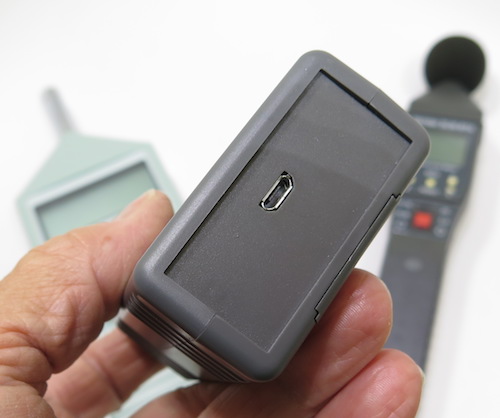
The micro USB port that charges the Vernier Go Direct Sound sensor.
Once at school, the social yelling begins until the teacher asks for quite after the eyeball-rattling tardy bell or buzzer or whatever alarm siren the architects chose. The ears get a brief rest before the blaring daily announcements. For some, the course work is quite reading while others it’s competing with the horn section. The cycle repeats five, six or seven more times before the extracurricular noise sets in. Add in rowdy gymnasiums, fire drills, in-your-face coaching, amplified voices, stainless steel whistles, and the percussion section of marching instruments. Then a noisy journey home to the music-filled study table, video games all before curling up with the earbuds for a few hours of
junk sleep.
Now this might all seem a little exaggerated, but the point is that the safety guidelines for sound exposure are based on the workday being the loudest part of the day. Not just an average for the entire day. Further, the daily noise diet is packed with rumbling diesel engines, hammering construction sites, car horns, garbage collection, EMS sirens all assaulting eardrums with reckless abandon and essentially no regulation. And with the peer pressure of pre-teen and teens to stare down a loud sound rather than use one’s fingers as earplugs, even the loudest sounds are often dealt with nothing more than gritted teeth.
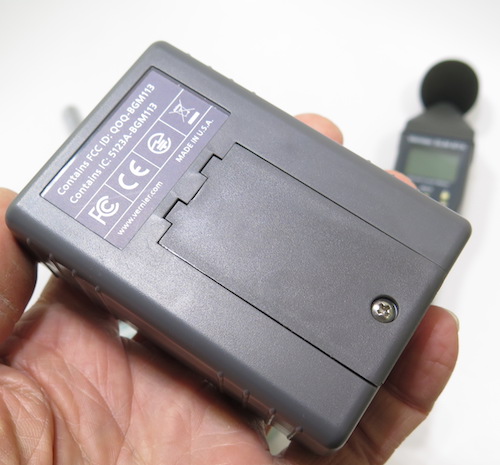
The door covering the replaceable battery. It is also the door panel that can be modified to contain a tripod socket.
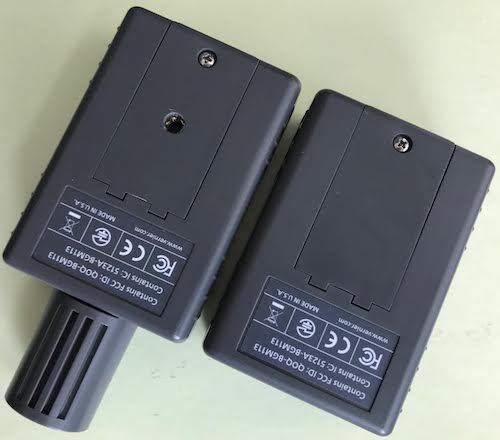
A tripod socket was added to the Vernier Radiation Sensor’s battery door.
But what if the world could become a quieter place. A place where loud sounds are scorned with the same distaste as belching smokestacks, water pollution, and unwashed hands preparing food? The reduction of pollution and the increase of safe food-handling procedures, it all starts with education. And education leads to data collection. And data leads to conclusions. And conclusions lead to public concerns, and then to policy. And after a generation or two, the policy feels like a human right. So just like the right to a clean environment and the right to safe food, there may soon be a right to an amount of quiet in the same way many of us now feel dark skies should be a right.
To launch this silent revolution, or rather revolution of silence, we need education and data. Luckily the data is now the easy part. Vernier Go Direct Sound Sensor wraps all the speed and simplicity of data collection you are familiar with from other bluetooth sensors, and encourages mobile sound level collection. Imagine a day in the life of a student reduced to sound exposure. Now times thousands of students all across the country. Since we are all quite aware of the increase in hearing loss today compared to any decade in the past, the need for study seems obvious.
The
Vernier Go Direct Sound Sensor is basically a sensor, radio transmitter, and power source all in one. By using a pocket computer (aka Cell Phone), iPad, laptop or Chromebook running
Vernier’s Analysis 4 app, a phenomenal number of application options are just waiting for students to do great things with them.
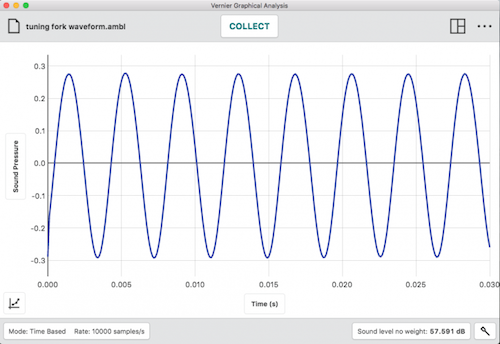
The graph of the sound pressure waveform of a tuning fork.
As a machine, the sounds the Vernier Go Direct Sound Sensor can detect are parallel to the human ear in frequency range, but the Vernier Go Direct Sound Sensor doesn’t scream in pain when the decibels go triple digits. Or complain at the monotony of constant tones. Or even care if you walk up to ten meters away leaving it alone next to a howling vacuum cleaner, or idling school buses, or landscapers waving around leaf blowers like light sabers in their battle to keep the playground clean.
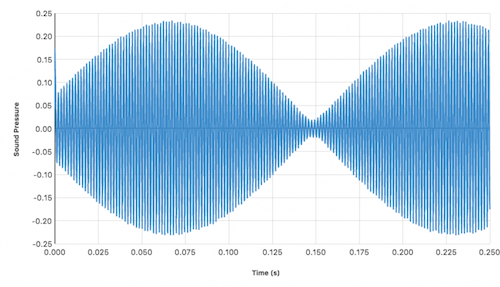
What beats look like to the Vernier Go Direct Sound sensor as viewed in Graphical Analysis 4.
At only 75 grams, and an eight-hour battery rechargeable both during and after data collection, the Vernier Go Direct Sound Sensor is a handy tool for measuring the unseen longitudinal waves constantly compressing and rarefying the air around us.
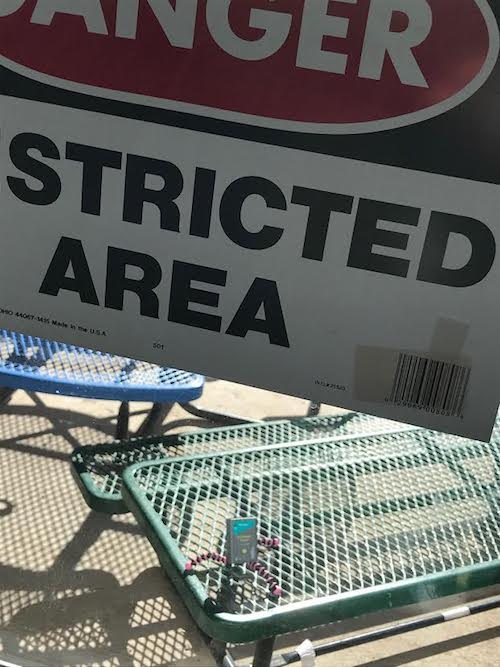
The Bluetooth radio allows the sensor to take measurements in areas unsafe for human ears.
Even the old numbers consider it unsafe when you are exposed to an average of 85 dB or above for more eight hours. One hundred decibels or more is hazardous after 15 minutes, and a minute and a half of 110 dB or more can cause permanent hearing loss. For reference, a jet taking off is about 140 dB, an ambulance siren is about 120 dB, a hair dryer is 90 db, and normal conversation is about 60. Obviously a siren feels much more more than twice as loud as a normal voice so the dB scale is certainly not linear. Its
logarithmic.
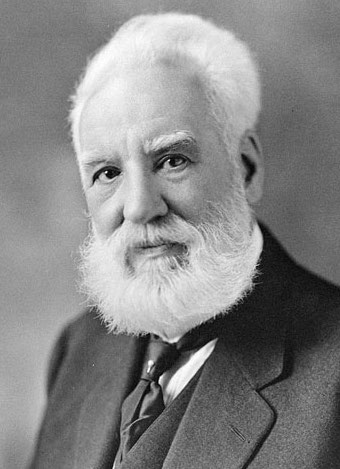
Alexander Graham Bell
The
decibel (dB) is a fascinating unit of measure. Originally designed as a unit to measure signal loss across telegraph and telephone lines, the decibel started out in 1896 as a unit called the “Miles of Standard Cable” or MSC. From there, in 1924, it was changed out of convenience to the “Transmission Unit” which was roughly equivalent to one mile of 19 gauge cable in MSC units. And finally the decibel we know and love appeared in 1928.
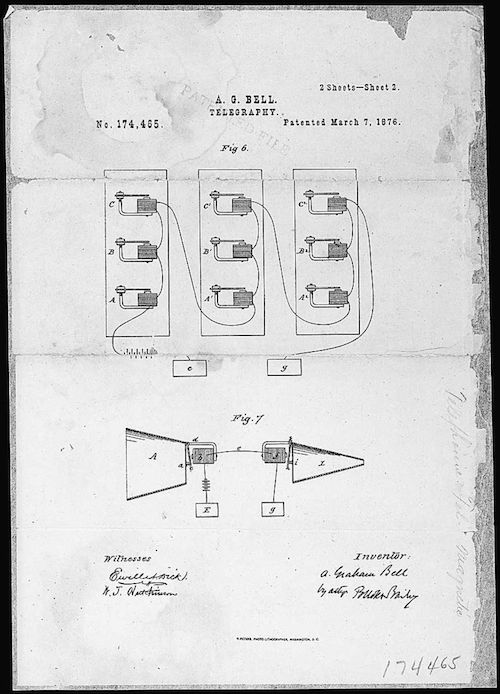
Page two of the two-page patent application for the telephone. Would be have been easy had Bell used the copy/paste function of a word processor. But that was still about a century away.
More specifically, the “bel” was created and then divided by ten. As you might guess, the bel was named after Alexander Graham Bell the inventor of the first practical telephone. Oh, and Bell considered the telephone an intrusion on his real work and refused to have a phone in his study. Sound familiar? I’m sure there’s a lesson for students in there somewhere.
The specifications of the Vernier Go Direct Sound Sensor are as follows:
Range: 55–110 dB
Accuracy: ±3 dB
Resolution: 0.1 dB
Sound Level Frequency Range: 30–10,000
HzMicrophone Level Frequency Range: 100
Hz to 15 kHz
Typical Max Frequency: 10,000
HzA couple things to note about the specs of the Vernier Go Direct Sound Sensor include again that the sound frequency range is about the same as human hearing so the minimums and especially maximums of frequency and decibels can limit some experiments. For instance, there are plenty of sounds greater than 110 dB, many of them driving up and down the street with flashing red and/or blue lights. But studying those loud sounds, like viewing the sun, might be on the outside of what is considered safe for science students. There are also many environments well under the 55 dB threshold.
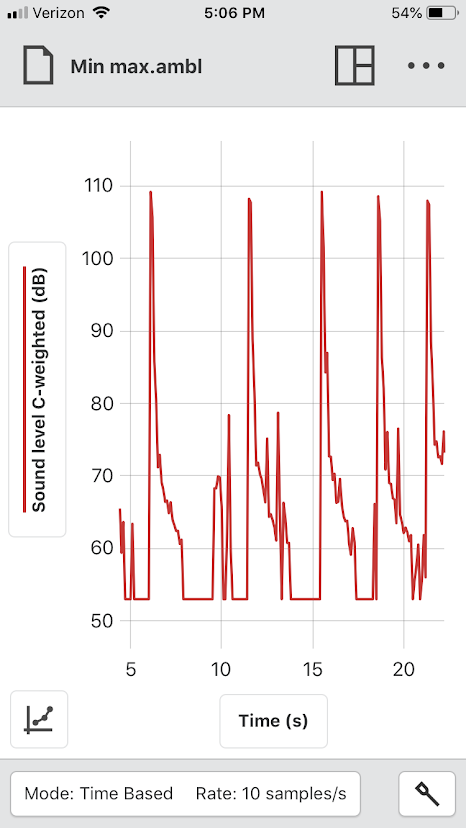
This experiment created very loud noise in a very quiet environment. Both the minimum and maximum of the sensor were reached as noted by the common ceiling and floor of the graph.
For some reference points, I took the Vernier Go Direct Sound Sensor for a walk around the local high school. Below are some examples. And I should mention that more than a few students wanted to borrow the sensor to do their own work with it. I might need a special padded case for it since some of the students wanted to borrow it for welding and wood shop class.
View this video for a taste of the sound environments tested.
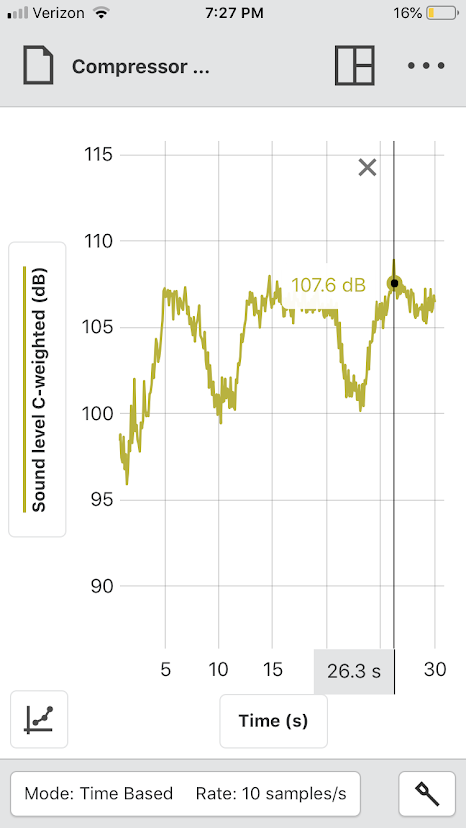
The gas-powered compressors used to blow-out underground sprinklers are as common around here as urban deer. But much louder. Standing around one could damage hearing in less time that it takes to clear the water out to the lines.
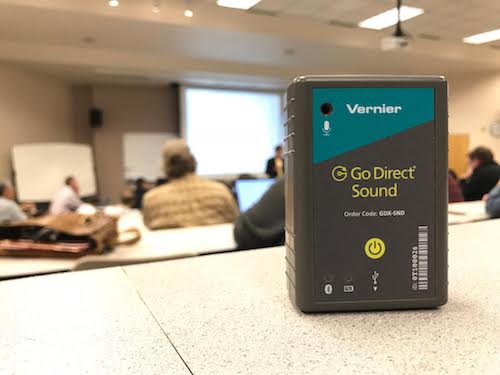
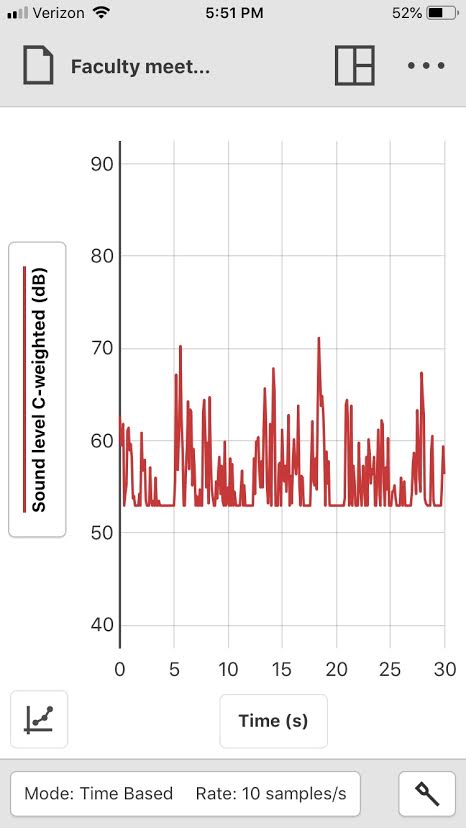
The sound level of a faculty meeting. Lot’s of minimum. Very little even reaching 70 dB.
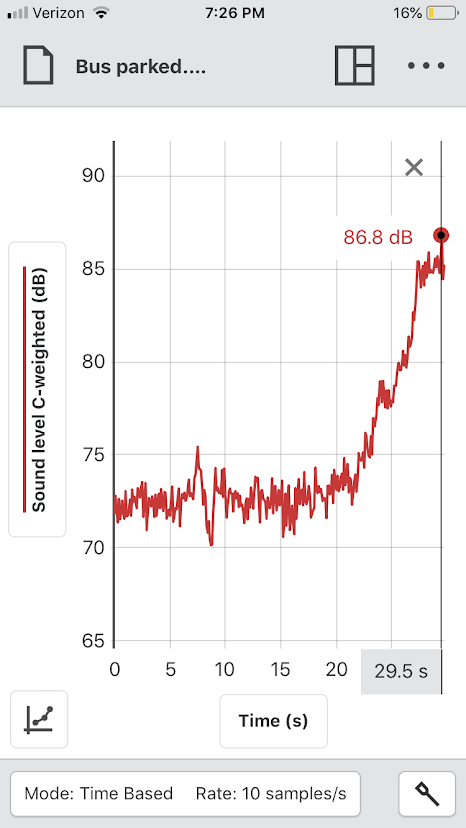
This is the sound profile when one walks up to and behind a city bus with a diesel engine.
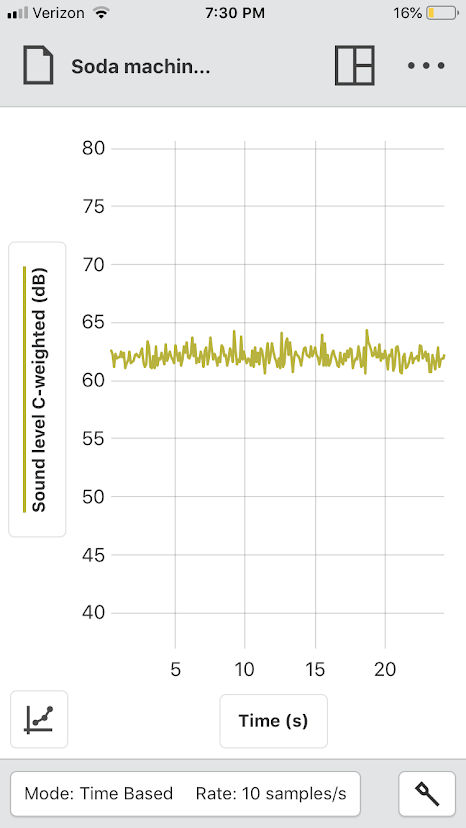
The constant hum of a large soda machine might not damage hearing, but it certainly can cause stress over time.
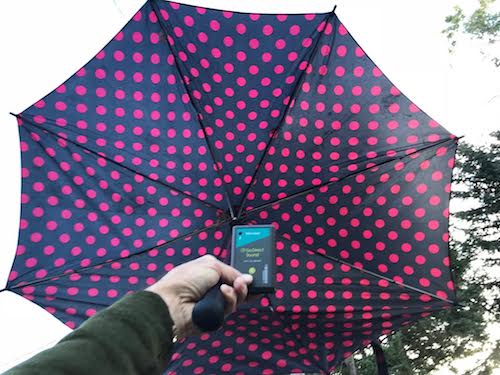
The Vernier Go Direct Sound sensor can be used to show how an increased surface area can amplify the sound. Like elephant ears. But using the Vernier Go Direct Sound sensor allows the effect to be observed in realtime along with some numbers. The frontside of the sensor is shown for photo purposes. Ideally the microphone hole on the sensor’s front would be facing the umbrella for maximum effect.
The Vernier Go Direct Sound Sensor is a welcome addition to the family of bluetooth sensors giving our student as tremendous visual inspection into the world of sound. And it really does put a face on the those eardrum-generated electrical pulses bouncing around inside their brains. Soon the students will be saying things like, “I thought that sound looked loud.” And it will make perfect sense.








